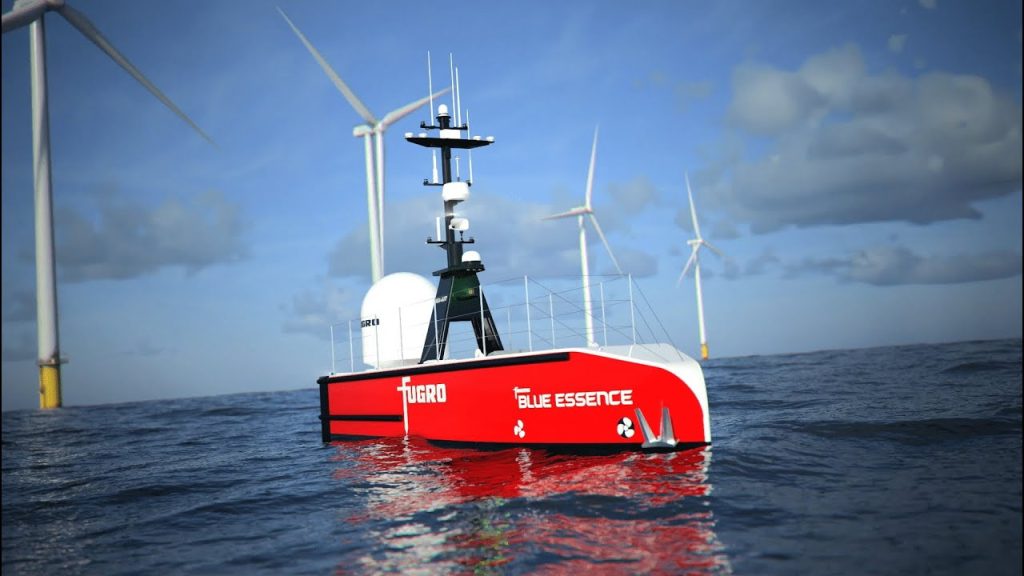Remote Operation: Revolutionising subsea activity
Published on 18 April 2023
Just as Remote Operations (RO) have been embraced for audits and inspections on surface assets, RO using ROVs with the pilots located many miles away, are becoming increasingly common and, for certain tasks, may soon become the norm.
Despite the technology being in place for a number of years, and several successful trials, there has previously been resistance to such operations. However, the pandemic has – as in many other areas of our work – brought about a rethink in many contractors’ approaches which has seen their popularity increase as they seek to improve the efficiency of their operations.
While it is still currently unlikely that RO will be utilised for heavy duty construction and trenching work, subsea inspection, survey and light intervention work scopes remain likely candidates for the transition to remote operation.
There are two main areas where ROV RO is likely to be implemented, resident seabed systems and Uncrewed Surface Vessel (USV) operations.

IMCA Contact
Andre Rose
Technical Adviser – Remote Systems and ROV, Offshore Survey, Digitalisation
Contact
Resident seabed systems
The ROV resides in a subsea garage or ‘cage,’ awaiting instructions for work. This could equally apply to an AUV.
These systems are usually skid mounted and lowered to the seabed from a vessel. The skid may be powered from a local asset or, for shorter term work, by battery packs. Control data and sensor data are sent via a communications link either linked to a local asset, or via a data buoy on the surface. For a tethered ROV system, the skid will also house a Tethered Management System (TMS). Some systems have detachable tethers to allow for more operational flexibility and longer excursions although this could restrict duration of the excursion and power available due to battery life.
A major advantage of this system is that it does not require a dedicated vessel for a single ROV system. One vessel could service several resident ROV systems managing simultaneous tasks. If maintenance is necessary, for example a new battery pack is required, the whole skid can be recovered to deck for the necessary work and repositioned or simply exchanged. The benefits of this system are obvious – greater efficiencies of asset use, and the reduced need for a vessel to be stationary via Dynamic Positioning (DP), further reducing operational costs.
In 2018, a UCV (Ultra Compact Vehicle) ROV was deployed, complete with subsea cage and TMS, in Equinor’s Snorre B field (Norway) where it has remained in operation ever since. Each deployment is for three months with short maintenance periods in between. The system is piloted remotely from shore and is available 24/7.
USV Remote Operations
USVs have been used as platforms on which to mount survey equipment, but as vessels are becoming larger and more sophisticated – a recently launched Ocean Infinity vessel is 87 metres – they are increasingly being used as launch platforms for AUVs and ROVs.
USVs are in the IMO Degree 3 class of Maritime Autonomous Surface Ships (MASS) vessels and are defined as uncrewed and remotely controlled. A controller, usually located in a shore based Remote Control Centre (RCC) or Remote Operations Centre (ROC), receives data from cameras and navigational and survey sensors. ROV operators and survey personnel may sit alongside vessel controllers in the RCC to provide additional support.
Benefits of USVs are much smaller vessels, no offshore crew, a lower carbon footprint and the ability to use more advanced and cleaner fuels.
There are several regulatory challenges with MASS vessels. The IMO are aiming to produce comprehensive guidance by 2028, with a first draft expected in 2025. The current approach means each flag state can determine its own rules, leading to some being more MASS friendly than others.

Adapting to new approaches
While the transition to remote ROV operations through resident seabed systems and USVs offers numerous benefits, including greater efficiency and reduced operational costs, there are several challenges – particularly in the areas of training and competence.
With reduced manning offshore, and ROV operators often located in shore-based control centres, ensuring the proper training and competence of these operators is critical to safe and effective performance. With this in mind, it is essential that we – as an industry – look to prioritise the development of training programmes and competence frameworks for remote ROV operations.
Becoming involved with IMCA’s Remote Systems and ROV Committee is a positive step, providing not only the opportunity to share practical experiences and best-practice, but also to shape the standards of tomorrow.
Andre Rose is IMCA’s Technical Adviser – Remote Systems and ROV, Offshore Survey, Digitalisation. Find out about the work of IMCA’s Remote Systems and ROV Committee.
